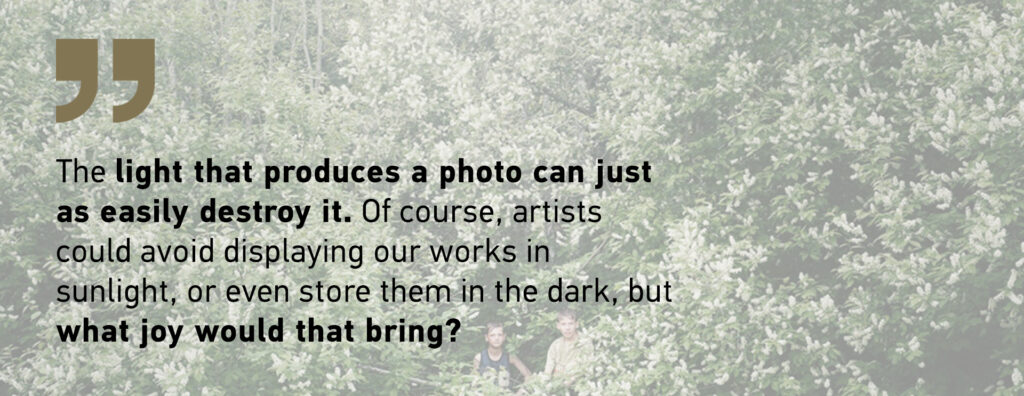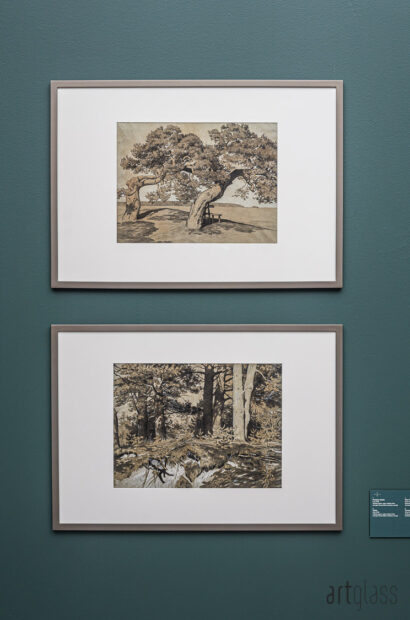"Reflection on Paper" - An Essay by Iveta Gabalina

When we look at a photograph, we mostly think about its content. We try to grasp Henri Cartier-Bresson’s decisive moment or Roland Barthes’ punctum. A photographic image lets us see the world in a way like no other. Three-dimensional reality converted into a flat image. Movement captured within a still photo using the long exposure technique. Muybridge’s famous studies of a horse’s gait are just as breathtaking as the frozen nuclear bomb clouds in Edgerton’s Stopping Time. However, what we do with photography is not exactly stop time – rather, we capture the ever-fleeting reflection of light caressing the subject momentarily. Without light, imaging would be unimaginable.
We live in an era of images. Photography has developed almost to the level of a new language. It pervades all of our lives, from our passports to supermarket catalogues. And then there are some images that we treat with much greater reverence. Let me mention a couple of examples. Your grandmother’s wedding photo, a reminder of the special significance of family in our lives. An art photograph displayed in a museum, or maybe one purchased to take home with you, to preserve for the generations to follow.
We like to see these special kinds of photographs – not just on the walls of a living room but also in a variety of more representative interiors – as statements of identity.
The pictures which we value are parts of ourselves, of our histories, our tastes, of topics we consider important. These objects will most likely outlive us, which gives us some reassurance. Perhaps without intent, this is how we continue to live after death. In others’ memories, mostly.
The light that produces a photo can just as easily destroy it. Rays of sunlight, which warm our bodies and our minds during the summer, can be harmful to more than our skin – the ultraviolet radiation they carry is deadly to the photographic medium. Of course, artists could avoid displaying our works in direct sunlight, or even store them in the dark, but what joy would that bring?
Since the earliest days of photography, glass – this transparent, lightweight and resilient material – has been used to protect the image. There are many kinds of glass available on the market today, with a range of specific properties to choose from. Reflection-free glass is most suitable for exhibitions, helping viewers plunge into the story of the image as the protective layer of glass is rendered nearly invisible. Laminated, impact-resistant glass (such as Artglass AR 99 Protect) is great for art photography and archival photography, with virtually guaranteed protection against any mechanical damage and ultraviolet radiation. UV protection can be ensured with coatings that block UV light to varying degrees, safeguarding the medium for future generations.
Light and photography have a complicated relationship, spanning the whole life cycle of a photograph – both its production and gradual deterioration happen by way of exposure to light.
Images intended for preservation or display require adequate protection. When a photographer devotes years of their work to a single series of images, making them the main driver of their creative life, or when the matriarch of the family hands down a cherished wedding photo to her adult granddaughter, it is only reasonable that these objects of high sentimental value should be treated with care and respect.
Article by Iveta Gabalina – Photographer, head of the ISSP Gallery, Riga

